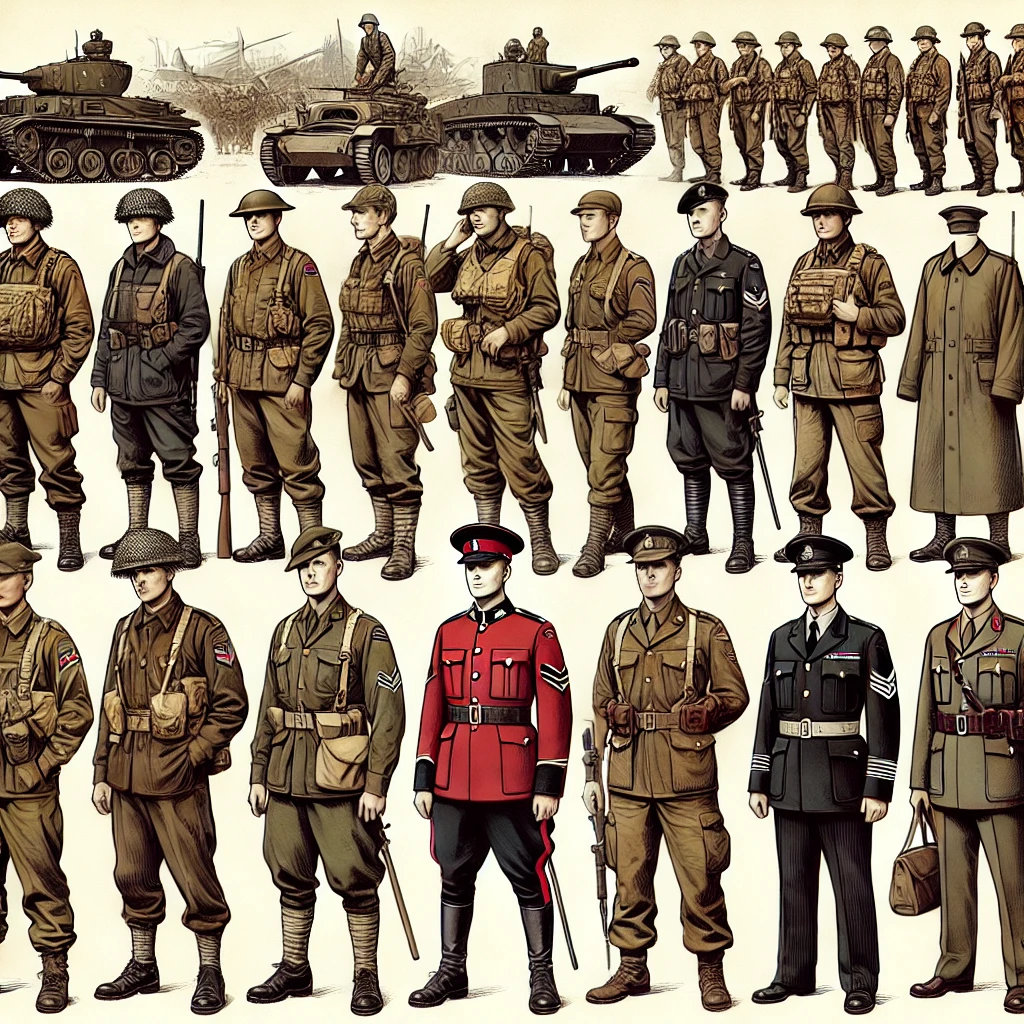
A Complete Guide to WW2 British Uniform Types: History & Variants
Published on Feb 28, 2025
A Complete Guide to WW2 British Uniform Types
Introduction
World War II saw extensive evolution in military attire, with each nation designing uniforms to suit its combat needs. The WW2 British soldier uniform stands out for its practicality, durability, and distinctive design. From the early war battledress to the specialized uniforms for airborne troops and tank crews, British military attire played a crucial role in defining the identity and efficiency of the army.
In this article, we'll explore different types of WW2 British uniforms, their features, materials, and how they compare to other wartime uniforms like those used in the Vietnam War and World War I.
1. Standard British Army Battledress (1937-1945)
The British Battledress was the standard issue for British soldiers during WW2. Introduced in 1937, this uniform was designed for practicality and ease of movement in combat conditions.
Key Features:
- Jacket & Trousers: A wool serge fabric set offering warmth and durability.
- Colour: Khaki brown (often called khaki drab) to blend with the battlefield environment.
- Pockets: Large buttoned chest pockets for carrying essentials.
- Shorter Cut: The jacket was designed to be shorter than previous uniforms for better mobility.
By 1940, an improved version, the 1940 Pattern Battledress, was issued with button placements and fit modifications.
2. British Paratrooper Uniform
Paratroopers required specialized gear for their airborne operations. The Denison Smock became a signature item for British airborne forces.
Key Features:
- Denison Smock: A camouflaged, windproof overgarment used for jumps and combat.
- Beret: Maroon beret to distinguish airborne units.
- Jump Trousers: Reinforced for durability and function.
- P37 Webbing: Used for carrying ammunition, grenades, and essentials.
3. British Desert Uniform (North Africa Campaign)
In the hot and arid conditions of North Africa, British forces needed lighter and more breathable uniforms.
Key Features:
- Khaki Drill (KD) Shorts & Shirts: Lightweight cotton fabric for ventilation.
- Pith Helmet & Bush Hat: Protection from the sun.
- Gaiters & Ankle Boots: Adjusted for desert terrain.
4. British Tank Crew Uniform
Tank crews required flame-resistant and flexible clothing. The black tank suit was introduced for functionality.
Key Features:
- One-Piece Suit: Flame-resistant, padded fabric.
- Black Color: Helped hide oil stains.
- Leather Gloves: For extra grip and hand protection.
5. British Officer's Uniform
Higher-ranking officers wore more distinguished attire, often featuring better fabric and tailoring.
Key Features:
- Tunic & Breeches: More refined, wool-blended attire.
- Sam Browne Belt: Leather belt with cross strap for holsters.
- Peaked Cap: Symbol of authority.
Comparison to Other War Uniforms
WW2 British Uniform vs. US Vietnam War Uniform
Many ask, "What color was the US soldiers' Vietnam jacket?" The Vietnam War uniform significantly differed from WW2 British attire.
- Colour: Unlike the brown British battledress, the US Vietnam-era jacket was primarily olive green.
- Material: Lighter ripstop fabric suited for humid jungles.
- Design: Multiple pockets were included for increased practicality.
WW2 British Uniform vs. WWI Uniform
WWI uniforms were heavier and less practical for modern warfare. The WW2 battledress improved mobility and durability.
- WWI Tunics: Longer and heavier wool fabric.
- WW2 Battledress: Shorter jackets for better movement.
- Boots: WWI soldiers wore puttees; WW2 introduced short boots with gaiters.
Conclusion
WW2 British uniforms played a critical role in military history, evolving to meet the challenges of different combat environments. Whether the battledress for European campaigns, the paratrooper smocks for airborne operations, or the desert attire for North Africa, each uniform was meticulously designed for function and durability.
Understanding these uniform types offers valuable insight into wartime strategies and historical evolution, helping collectors, historians, and enthusiasts appreciate their significance. To learn more about military uniforms, explore our website for authentic reproductions and detailed historical insights.
